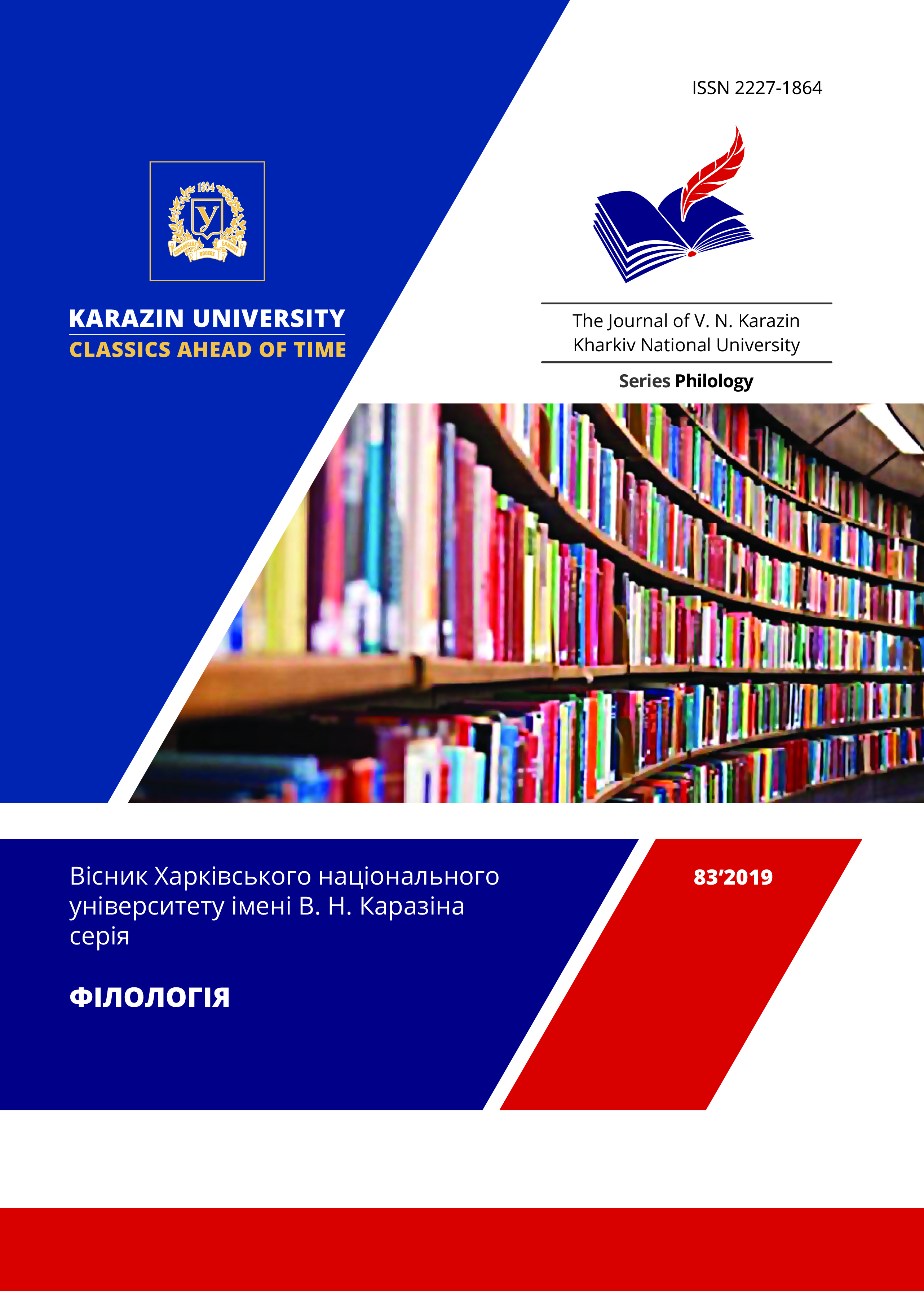Імагологічні моделі у трилогії «Експедиція „Гондвана”» Леоніда Тендюка
Анотація
У статті досліджується проблематика імагології на матеріалі трилогії «Експедиція „Гондвана”» Л. Тендюка. Розглянуто основоположний для імагології концепт «свої» – «чужі», порушуються питання стереотипів національного мислення щодо образів інших народів, зокрема й таких, з якими існують ворожі або дружні стосунки. При цьому образ «чужого», розкриваючись через рецептивно-оцінювальний апарат, характеризує власне суб’єкт з його самосвідомістю і системою цінностей. Протистояння у творі двох ворогуючих країн – Радянського Союзу та Америки – втілюється в моделі «свій» ↔ «абсолютно чужий». Усвідомленні героєм Василем Гайовим та його товаришами «неоднорідності» «чужих» свідчить про суб’єктивну симпатію як базис імагологічних уявлень. Їхні уявлення про «хороших» американців втілюються в моделі «свої» ↔ «чужі, які потенційно можуть бути своїми». Знайомство головного героя із в’єтнамцем Чангом переводить останнього в стан «свого» і скріплюється довірою та взаєморозумінням іх ним та іншими піддослідними в’єтнамцями. Така модель взаємин будується за схемою «я (свій)» ↔ «абсолютно чужий» → «свій». Під цю схему підпадає і знайомство з Лотою, яка безапеляційно визнається за «свою», хоча й працює на ворога. Зустріч дослідників із тубільцями атолу Хібоко репрезентує зіткнення різних культур, але під час спілкування між ними опозиційна модель «свій» − «чужий» трансформується в ієрархічну, бо аборигени визнають вищість прибульців як богів. Перебування моряків серед тубільців можна зобразити як модель «я (свій)» → «чужий». «Свій» простір на кораблі «Садко» для героя Гайового засвідчений рецепцією на тактильному, вербальному, гастрономічному, мистецькому рівнях. Корабель як мінімодель рідної землі стає центром упорядкованого «свого» простору, що протиставляється хаосу «чужого».
Завантаження
Посилання
Voitovych, V. (2005) Ukrainska mifolohiia [Ukrainian mythology]. Kyiv : Lybid. [in Ukranian]
Kotova, S. (2015) «Obraz chuzhoho» i «obraz voroha»: «imaholohiia» v suchasnykh mizhdystsyplinarnykh humanitarnykh doslidzhenniakh [«The image of a stranger» and «enemy image», «imagology» in the modern interdisciplinary humanities researches]. Visnyk KNU imeni T.Shevchenka. no. 14, pp. 20–24.
Leontovich, O. (2004) Russkie i amerikantsyi: paradoksyi mezhkulturnogo obscheniya [Russians and americans: paradoxes of intercultural communication]. Volgograd : Peremena. [in Russian]
Lotman, Yu. (2010) Semiosfera [Semiosphere]. Sankt-Peterburg : Iskusstvo–SPb. [in Russian]
Mironov, V. (2005) Filosofiya i metamorfozyi kulturyi [Philosophy and metamorphoses of culture]. Moscow : Aletey. [in Russian]
Posokhov, S. (2016) «Svoi, «chuzhi», «inshi»: problemy ta perspektyvy imaholohii» [«Yours», «stranger», «others»: problems and perspectives of the imagology»]. Kharkivskyi istoriohrafichnyi zbirnyk. vol. 15, pp. 28–41.
Tendiuk, L. (1989) Ekspedytsiia «Hondvana» [Gondwana „Expedition”]. Kyiv : Veselka. [in Ukranian]
Leerssen, J. [Imagology: history and method]. URL : http://www.imagologica.eu/ pdf/historymethod.pdf




